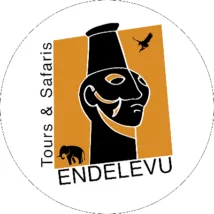Testimonials
Dar Es Salaam - Nyerere - Mikumi - Ruaha - Dar Es Salaam
Tailor made 13 days Photographic Safari
Tour highlights
- Photographic Safari (4 adults)
- 4 nights Nyerere National Park
- 3 Nights Mikumi National Park
- 5 Night Ruaha National Park
Nyerere National Park
Nyerere National Park ( former Selous Game Reserve) is one of the largest faunal reserves of the world, located in the south of Tanzania.
The Selous was designated a UNESCO World Heritage Site in 1982 due to the diversity of its wildlife and undisturbed nature.
In 2019, President John Magufuli announced that the Selous Game Reserve would be split in two.
The larger portion (30,893km2 – more than twice the size of the Serengeti National Park) becoming the Nyerere National Park, while the southern section will remain the Selous Game Reserve.
The wildlife in Nyerere National Park is considered one of the finest collection of wild animals anywhere in the world.
With some of the largest population of mammals and reptiles in Africa and over 440 bird species, Nyerere and the surrounding Selous eco system is home to a rich, diverse collection of wildlife which tourists from the world come to see during a Safari.
Click to see accomodation
Mikumi NP
It covers an area of 3'230 km² hence is the seventh largest in the country.
The Mikumi is bordered to the south with the Selous Game Reserve, the two areas forming a unique ecosystem. Two other natural areas bordering the national park are the Udzungwa Mountains and Uluguru Mountains.
The landscape of Mikumi is often compared to that of the Serengeti.
Click to see accomodation
Ruaha NP.
Ruaha National Park is the second largest national park in Tanzania.
The addition of the Usangu Game Reserve and other important wetlands to the park in 2008 increased its size to about 20,226 square kilometres (7,809 sq mi), making it the second largest park in Tanzania and East Africa.
The name of the park is derived from the Great Ruaha River, which flows along its southeastern margin and is the focus for game-viewing.
The national park is visited by Eurasian migrants twice a year – from October to November and from March to April.
The park is inhabited by over 450 different bird species including some endemics such as the Ashy starling and the Yellow-collared Lovebird.
Click to see accomodation



 Marco B. (CH - TIcino)
Marco B. (CH - TIcino)